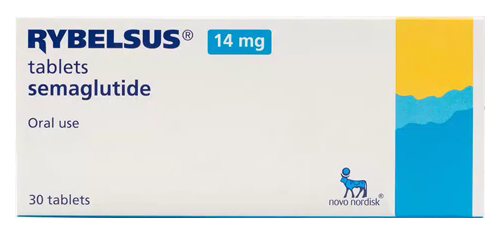Buy Ozempic (semaglutide) online at the best price without a prescription

| Product Name: | Ozempic (semaglutide pills) |
|---|---|
| Doses: | 3mg, 7mg, 14mg |
| Prices: | $0.60 – Per Pill |
| Where To Buy Online Without Prescription | OnlinePharmacy |
Ozempic Promo Codes July 2025
| 5% OFF Coupon Code: |
|
|---|
While Ozempic (Semaglutide) is primarily approved for the management of type 2 diabetes, a notable secondary benefit observed in clinical trials and patient experiences is significant weight loss. This effect is attributed to the drug’s mechanism of action, which includes delaying gastric emptying and modulating appetite through central pathways in the brain. As a GLP-1 receptor agonist, Ozempic enhances the feeling of fullness, leading to reduced calorie intake and, subsequently, weight reduction.
Several studies have documented the weight loss potential of Ozempic, showing that, in addition to improving glycemic control, it can lead to substantial reduction in body weight. Patients on Ozempic often report decreased appetite, which assists in weight management efforts. This has led to the investigation of Semaglutide for non-diabetic individuals as a potential weight management solution.
Ozempic is just one manifestation of Semaglutide, designed specifically for the weekly subcutaneous administration to manage blood glucose levels in adults with type 2 diabetes. The broader application of Semaglutide encompasses not only diabetes management but also significant strides in weight loss and cardiovascular health improvement. This makes it a substance of interest in various therapeutic areas.
Understanding the full scope of Semaglutide's applications provides valuable insights into its multifaceted role in contemporary medicine, addressing a spectrum of health issues from diabetes to obesity, and contributing to the advancement of patient care and treatment outcomes.
In the following sections, we will delve into Semaglutide in its entirety, exploring the different forms under which it is available and the distinct purposes each form serves. We will examine each Semaglutide formulation, including Ozempic, highlighting their unique characteristics, administration routes, and clinical applications.
In What Forms is Semaglutide available?
Semaglutide is available in several formulations, each designed for specific medical conditions and modes of administration. We will explore these forms in detail, outlining their purposes, benefits, and differences.
Ozempic
Ozempic is a once-weekly injectable form of Semaglutide, specifically approved for the management of type 2 diabetes in adults. It is administered subcutaneously and works by enhancing insulin secretion, suppressing glucagon secretion, and slowing gastric emptying. Ozempic is notable for its cardiovascular benefits and its ability to induce weight loss in patients with type 2 diabetes.
Rybelsus
Rybelsus is the oral form of Semaglutide, making it the first GLP-1 receptor agonist available in a pill form. It is indicated for the treatment of type 2 diabetes in adults and is taken once daily on an empty stomach. Rybelsus provides an alternative for those who prefer oral medication over injections, offering the same blood sugar management and potential for weight loss as the injectable forms.
Wegovy
Wegovy is another injectable form of Semaglutide, but it is specifically approved for weight management in adults with obesity or overweight with at least one weight-related condition such as hypertension, type 2 diabetes, or dyslipidemia. Wegovy is administered once weekly, like Ozempic, but at higher doses. It works by suppressing appetite, which leads to reduced calorie intake and weight loss.
Each form of Semaglutide is tailored for specific patient needs and medical conditions. While Ozempic and Wegovy are administered through injection, Rybelsus offers a non-invasive oral alternative for diabetes management. The choice between these forms depends on various factors, including the medical condition being treated, patient preferences, and individual health profiles. Despite the differences in administration and dosing, all forms of Semaglutide maintain the core benefit of improving glycemic control in type 2 diabetes and aiding in weight management.
In what Dosages is Semaglutide available?
Semaglutide is offered in various dosages to accommodate the therapeutic needs and for those seeking weight management solutions.
Ozempic
Ozempic initial dose is typically 0.25 mg once weekly for the first four weeks, intended as a starting dose to improve gastrointestinal tolerability. This dose is not effective for glycemic control. After the initial four weeks, the dose is increased to 0.5 mg once weekly. Depending on the individual’s need for additional glycemic control and their tolerance of the medication, the dose may be further increased to 1 mg once weekly, and a maximum dose of 2 mg once weekly can be used if necessary.
For off-label use in weight management, the dosages might align with those used for diabetes treatment but can be adjusted based on individual response and healthcare provider discretion. The regimen starts at 0.25 mg weekly, with potential adjustments up to 0.5 mg, 1 mg, or even 2 mg weekly, depending on tolerability and effectiveness in weight reduction.
Rybelsus
Rybelsus, the oral form of Semaglutide, is initiated with a dose of 3 mg once daily for 30 days to improve gastrointestinal tolerability. After this period, the dose is increased to 7 mg once daily. If additional glycemic control is needed, the dose can be further increased to 14 mg once daily, which is the maximum recommended dosage.
Rybelsus, similar to Ozempic, it may be considered for off-label use in weight management. The starting dose for improving gastrointestinal tolerability is 3 mg daily, with the possibility of increasing to 7 mg and then to the maximum of 14 mg daily, based on the patient's response and side effect profile.
Wegovy
Wegovy is used primarily for weight management and is available in higher dosages than Ozempic. Treatment begins with a dose of 0.25 mg once weekly for four weeks, followed by incremental increases every four weeks through a series of doses: 0.5 mg, 1 mg, 1.7 mg, and finally 2.4 mg once weekly. The final dose, 2.4 mg once weekly, is maintained as the therapeutic dose for weight management.
How to take Ozempic?
Semaglutide is administered in several forms, each with specific guidelines to ensure proper usage and maximize therapeutic benefits.
Ozempic (Injectable)
Ozempic is provided in a pre-filled, disposable injection pen. It is injected subcutaneously (under the skin) once a week, at any time of the day, with or without meals. Common injection sites include the abdomen, thigh, or upper arm. It's important to rotate the injection site each week to reduce the risk of tissue damage or irritation. Patients should receive proper training from healthcare professionals on how to administer the injection correctly before starting treatment.
Rybelsus (Oral Tablet)
Rybelsus is taken orally, making it the only non-injectable form of Semaglutide. The tablets should be taken on an empty stomach with a sip of water (up to 4 oz or 120 ml) at least 30 minutes before the first meal, beverage, or other oral medications of the day. The tablet should not be split, crushed, or chewed and should be swallowed whole to maintain its efficacy.
Wegovy (Injectable)
Like Ozempic, Wegovy is administered via subcutaneous injection once a week. It comes in a pre-filled pen, and the injection can be done at any time of the day, independent of meals. Wegovy also requires rotating the injection site with each dose to prevent discomfort and potential site reactions. Patients are advised to follow the stepwise dosing regimen, gradually increasing the dose over time to improve gastrointestinal tolerability and support weight loss.
How long does it take for Ozempic to work?
The time it takes for Semaglutide to exhibit its therapeutic effects can vary depending on the specific condition being treated, the form of Semaglutide being used (Ozempic, Rybelsus, or Wegovy), and individual patient factors. Generally, Semaglutide begins to affect blood glucose levels shortly after treatment initiation, but the visible clinical benefits, such as significant glycemic control or weight loss, may take longer to manifest.
When used for weight management, the effects of Ozempic on weight loss are gradual. Initial weight loss can be seen within the first few weeks; however, significant weight loss is typically observed over a period of months. The most substantial weight reduction usually occurs within the first six months to a year of treatment, as the dosage is gradually increased to the therapeutic level.
How long does Ozempic last?
Semaglutide's duration of effectiveness in the body is influenced by its pharmacokinetic properties, including how it is metabolized and excreted. These characteristics contribute to the drug's long-acting nature, allowing for once-weekly administration in its injectable forms (Ozempic and Wegovy) and daily intake in its oral form (Rybelsus).
The injectable forms of Semaglutide, Ozempic, and Wegovy, have a half-life of approximately 1 week. The long duration of action is a key feature of these formulations, ensuring sustained therapeutic effects and weight management over the dosing interval. The full clearance of Semaglutide from the body, after discontinuation, may take up to 5 weeks, considering its half-life and the time required to decrease to undetectable levels.
Rybelsus, the oral form of Semaglutide, is designed for daily administration. Despite the difference in administration route, its pharmacokinetic profile is tailored to support a consistent therapeutic effect throughout the day. The drug's half-life supports daily dosing by maintaining effective drug concentrations in the bloodstream.
Ozempic possible side effects
Semaglutide, used in various forms such as Ozempic, Rybelsus, and Wegovy, has been associated with a range of potential side effects. These effects can vary in severity from mild to serious and depend on individual patient factors, dosage, and duration of treatment.
Common Side Effects
- Gastrointestinal Issues: Nausea, vomiting, diarrhea, abdominal pain, and constipation are among the most commonly reported side effects. These symptoms are often most pronounced at the beginning of therapy and may decrease over time.
- Appetite Changes: Decreased appetite is a common effect, which can contribute to the weight loss observed with Semaglutide.
- Injection Site Reactions: For the injectable forms (Ozempic and Wegovy), patients may experience redness, swelling, or pain at the injection site.
Semaglutide Patient Experiences and Reviews
Ozempic has gained significant attention for its efficacy in weight management. Patient experiences and reviews often highlight the impact of Semaglutide on weight loss journeys, providing valuable insights into its benefits and challenges.
- Effective Weight Loss: Many users report substantial weight loss that was difficult to achieve with diet and exercise alone. Patients often cite significant reductions in body weight within the first few months of treatment, with ongoing progress over time.
- Reduced Appetite: A commonly praised effect is the reduction in hunger and appetite. Users find it easier to adhere to lower-calorie diets, making weight management more attainable.
- Improved Health Markers: Beyond weight loss, individuals note improvements in overall health markers, including lower blood pressure, improved cholesterol levels, and better blood sugar control for those with type 2 diabetes.
- Increased Energy and Mobility: With weight loss, some users report increased energy levels and enhanced mobility, contributing to a better quality of life and higher activity levels.
The general consensus among patients using Semaglutide for weight loss is positive, with many experiencing life-changing results. While the journey involves navigating side effects and embracing lifestyle modifications, the benefits in terms of weight reduction and improved health outcomes are widely celebrated.
Inconveniences of Injectable Forms and the Advantage of Oral Ozempic
While injectable forms of Semaglutide, such as Ozempic and Wegovy, offer significant benefits for managing type 2 diabetes and aiding in weight loss, they come with certain inconveniences that might affect patient compliance and overall satisfaction. Conversely, the oral tablet form, Rybelsus, presents a notable advantage by addressing some of these challenges.
Inconveniences of Injectable Semaglutide
- Injection-Related Discomfort: Some patients may experience pain, bruising, or irritation at the injection site, which can be a deterrent to ongoing use.
- Need for Regular Injections: The requirement to administer weekly injections can be a logistical challenge and psychologically daunting for some individuals, particularly for those with needle phobia.
- Storage and Handling: Injectable Semaglutide requires refrigeration before use, and proper handling to maintain its efficacy, which might not be convenient for all users, especially those who travel frequently.
- Complexity of Dose Escalation: The process of dose escalation with injectable forms requires patients to be vigilant about changing dosages at specified intervals, which can complicate treatment adherence.
Advantages of Oral Semaglutide (Rybelsus)
- Non-Invasive Administration: Rybelsus eliminates the need for injections, offering a significant advantage for patients who prefer a non-invasive medication form or have an aversion to needles.
- Simplified Daily Routine: Taking a daily oral tablet can seamlessly integrate into a patient’s existing routine, potentially improving adherence and treatment consistency.
- No Special Storage Requirements: Unlike its injectable counterparts, Rybelsus does not require refrigeration, making it more convenient for patients to store and transport.
- Consistent Dosing: The daily administration of Rybelsus simplifies the dosing schedule, reducing the complexity associated with dose adjustments and escalation seen with injectable forms.
Ozempic Cost and Accessibility
The cost and accessibility of Semaglutide, particularly for weight management purposes, can vary significantly based on geographic location, insurance coverage, and the specific form of the medication (e.g., Ozempic, Rybelsus, Wegovy).
- Cost Without Insurance: Without insurance, the cost of Semaglutide can be prohibitive for many patients, potentially limiting access to this effective treatment option.
- Availability: In some regions, access to Semaglutide may be limited by supply issues or the lack of healthcare providers familiar with prescribing it for weight management.
Despite the challenges related to cost and accessibility, the potential benefits of Semaglutide for individuals struggling with weight management make it a sought-after treatment. Efforts to improve accessibility and affordability, such as through generic alternatives, expanded insurance coverage, or the use of Ozempic discount coupons, could enhance patient outcomes and extend the reach of this valuable medication.


